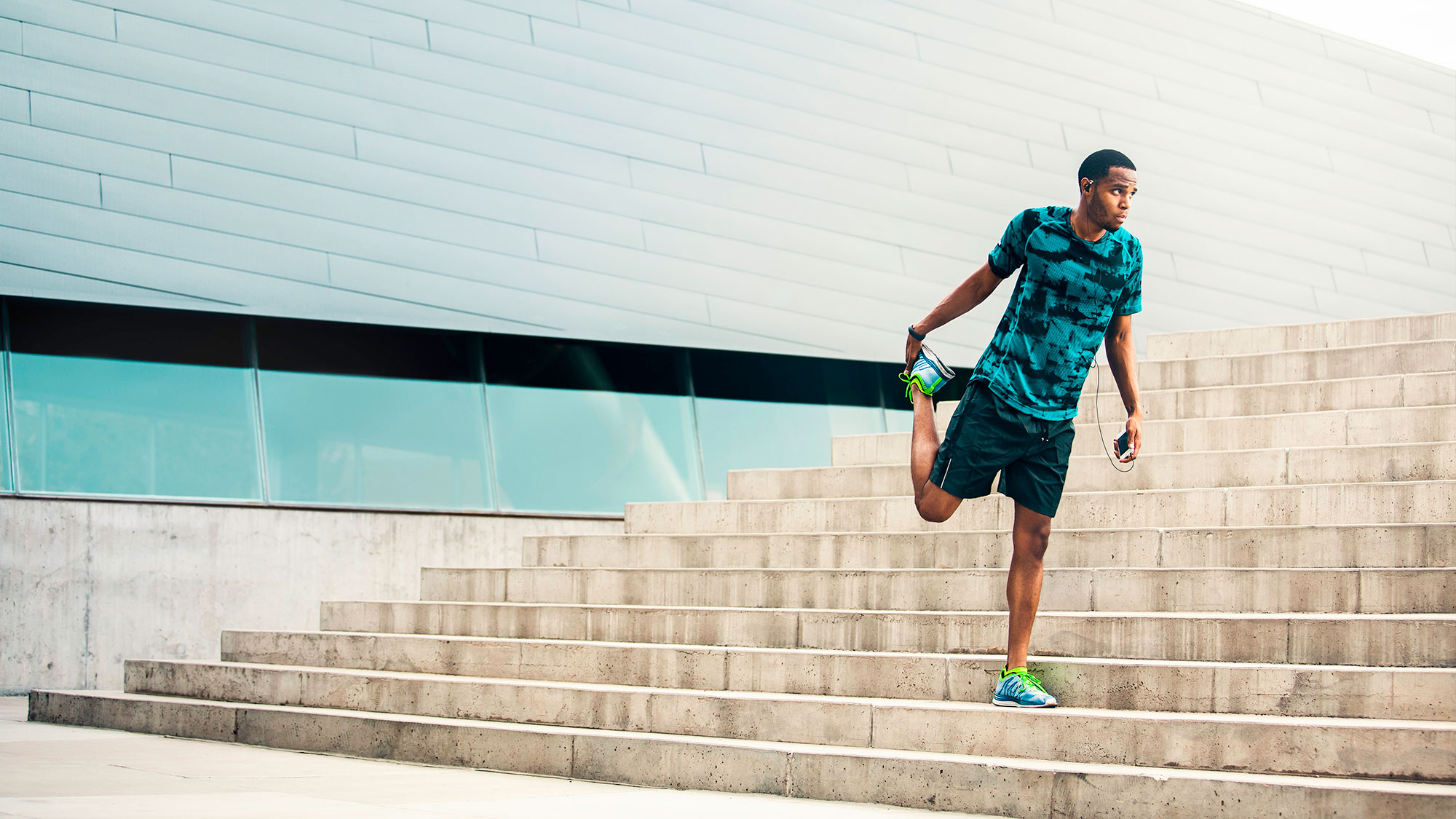Hip flexors and running: essential info, exercises and stretches
All you need to know hip flexors and running, including how to protect and develop flexibility in this crucial area


In this article you'll find everything you need to know about hip flexors and running - including some handy activation exercises and essential stretches.
As a runner, the chances are you'll know that doing stretching exercises is important both pre- and post-run. But whether you actually take the time to do them before pulling on your best running shoes for men or the best running shoes for women is another matter altogether...
In particular, most runners neglect to think about their hips until their hips start to complain, and often problems lower down the legs can stem from inflexible hip flexor muscles.
What are the hip flexors?
“The hip flexors are the main muscles that bend your hip, as if you were to move your knee towards your chest, or you were to put your socks on,” says Tim Allardyce, a leading sports physiotherapist at Surrey Physio.
“There are three key muscles: the psoas major, iliacus and rectus femoris. They all work together to bend or flex the hip. Hip flexors are important for any sport where you need to move or run, so the hip flexor aids runners’ gait and helps lift your hips.”
Hip flexors and runners
Muscle activation will be highest in sprinters, particularly during the knee drive phase, so increasing your speed will increase hip flexor contraction.
As these muscles are used so much in running, inevitably, if you don’t look after your hip flexors they will begin to complain about the lack of love. That complaining can often become debilitating, and lead to months of rest and physio rehab.
Start your week with achievable workout ideas, health tips and wellbeing advice in your inbox.
“Pain in the hip flexors can be related to the biomechanics of the leg or foot, and can also be related to underlying back issues as the main hip flexor attaches to five lower back vertebrae,” says Allardyce.
Most runners with hip issues Allardyce sees tend to involve the hip flexor tendons due to increasing load, distance or speed too quickly when training.
How not running impacts hip flexors
A lack of movement can also lead to hip flexor problems, especially if you spend all day just sitting at a desk.
Add to that time outside of work sitting watching TV or in front of the computer and those hip flexors are constantly contracting, meaning problems could be coming down the road on your runs.
“When sitting, the hip is flexed and although the hip flexors are not under load or weight bearing, there could be shortening of the muscles with cases of prolonged sitting,” says Allardyce.
It is crucial, therefore, that runners keep a check on their hip flexor flexibility and ensure the muscles remain stretched and able to help carry and propel you over the miles.
Hip flexor activation exercises
Runners and warm-ups don’t often go hand-in-hand, especially those short on time, but it’s well worth spending just a few minutes doing some warm-up drills to wake the hip flexors up from their time of lazing around super-contracting before you spend an hour demanding they help power you round a 10k run.
In these activation exercises, you’re looking to stretch and lengthen the hip muscles before putting them through their paces.
- Lunges
Lunges are great at firing up the hips and quick and straightforward to do. Go for low lunges if you want to spice the warm-up up a little. Not sure what you're doing? Read our complete guide on how to do lunges, featuring handy variations.
- Figure 4s
Figure 4s are also ideal for stretching out the muscles around your hips.
Sit on the floor with your knees bent in front of you and lift one ankle up and place it on the knee of the other leg, forming a kind of No4 shape with your legs. Feel the stretch around your hip area and hold for 30 seconds.
- Knee raises
Failing that, simply standing on the spot and alternately raising your knees as high as they will go will help with activating the hip muscles.
- Foam rolling
If you can, get a foam roller or massage ball into the flexor just below your hip bone and spend a few seconds rolling out the muscle. If you don't own one already, we've picked the best foam rollers to use at home.
Two important hip stretches
Stretching the hip flexors regularly will also help lower the risk of injury.
“The best way to improve hip flexor length is to stretch them,” says Allardyce. “There are a number of exercises that work well for this. My favourite is the standing quad and hip flexor stretch.” Allardyce also recommends the kneeling lunge stretch.
- Standing quad and hip flexor stretch
Do this by standing up and bending your knee so your foot goes towards your butt.
Extend your hip behind you, to create a stretch to the front and top of your thigh. You may need to hold on to a table for support.
Hold for 30 seconds and repeat three times. This stretches the femoris muscles and quadricep muscle group.
- Kneeling lunge stretch
In a kneeling lunge position, move your body forwards to create a stretch to the front of your thigh and groin. If you want to make the stretch stronger, tilt your pelvis backwards.
Use a pillow under your knee if you find that you need the padding.
Hold for 30 seconds and repeat three times.
Howard is a freelance health and fitness journalist and copywriter. He has written for publications including ShortList, Runner’s World, Trail Running, Women’s Running, Red Bulletin, Wareable and Cycling Weekly. He enjoys nothing more than lacing up his trail shoes and heading out to explore new trails. He’s run ultramarathons everywhere from the French Alps and Canadian mountains to the Welsh coast and Peak District. When not running, he’s usually found hitting his local MTB singletrack trails or on a quest to find the country’s best cinnamon bun.
